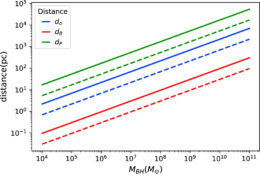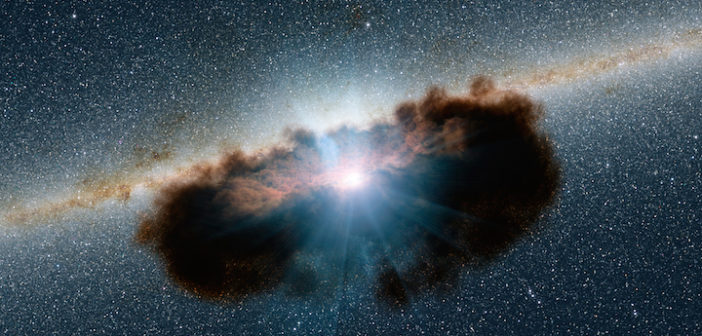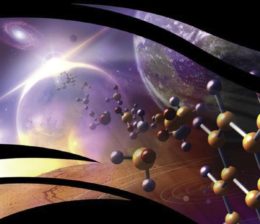How does life arise on exoplanets? What environments are necessary for it to survive? What conditions pose threats to life? These are some of the many questions of astrobiology, the study of life beyond our solar system.
While much research explores how stellar radiation influences whether planets can form or sustain life, fewer studies examine other sources of radiation. Today’s study explores extreme sources: the violent and bright centers of active galaxies.
Extreme Sources

Active galactic nuclei emit powerful high-energy radiation as they accrete gas and dust. [ESA/NASA, the AVO project and Paolo Padovani]
A recent study by Harvard University scientists Manasvi Lingam, Idan Ginsburg, and Shmuel Bialy suggests the opposite may be true: the radiation from AGN has the potential to aid (Earth-like) life’s chances of formation and survival.
The Cons
Let’s start with the downside of having an enormous source of high-energy radiation lurking nearby: as we’ve all experienced via the occasional sunburn, too much ultraviolet (UV) radiation can have harmful effects for life. On the extreme end, an excess of UV radiation can inhibit photosynthesis — a process on which the vast majority of Earth-based life relies for survival — and can damage DNA and other biomolecules.
But how much is too much? Lingam and collaborators conduct a series of calculations to show that an AGN doesn’t have much of an impact on the vast majority of planets in a galaxy. If the Milky Way had an active nucleus, the danger zone for potential extinction via UV radiation would extend to just ~100 light-years from the AGN — a tiny distance on the scale of our 100,000-light-year galaxy.
The Pros
But UV light isn’t all bad! In fact, UV radiation is a necessary ingredient for the prebiotic chemical reactions that led to the synthesis of biomolecular building blocks on Earth. Lingam and collaborators show that, within a certain distance of the AGN (out to ~150 light-years in our Milky-Way-size active-galaxy example), UV radiation from the accreting black hole could actually jump-start these chemical reactions and eventually lead to the formation of life.
What’s more, the authors demonstrate that the visible light from AGN can power photosynthesis on nearby planets — which could be particularly useful for free-floating planets that don’t have a host star to provide that light. The zone for which this holds true is broad: out to more than 1,100 light-years, for a Milky-Way-size active galaxy.
The Upshot

Author estimates for the distances at which an AGN could enable prebiotic chemistry (dO, blue line), facilitate potential extinction events (dB, red line), and permit photosynthesis (dP, green line) as a function of the black hole mass. Solid and dashed lines indicate two different levels of AGN power. [Lingam et al. 2019]
But in other types of galaxies — like those with especially large supermassive black holes, or compact dwarf galaxies with high stellar densities at their center — AGN could play a significant role in sparking life and helping it to stay alive.
Citation
“Active Galactic Nuclei: Boon or Bane for Biota?,” Manasvi Lingam et al 2019 ApJ 877 62. doi:10.3847/1538-4357/ab1b2f



3 Comments
Pingback: Daily Study Log (2019-05-30) | Study Astrophysics
Pingback: June 24, 2019 updates – Tennessee Valley Interstellar Workshop
Pingback: Astronomers Detect Largest Explosion Ever | NeuroLogica Blog